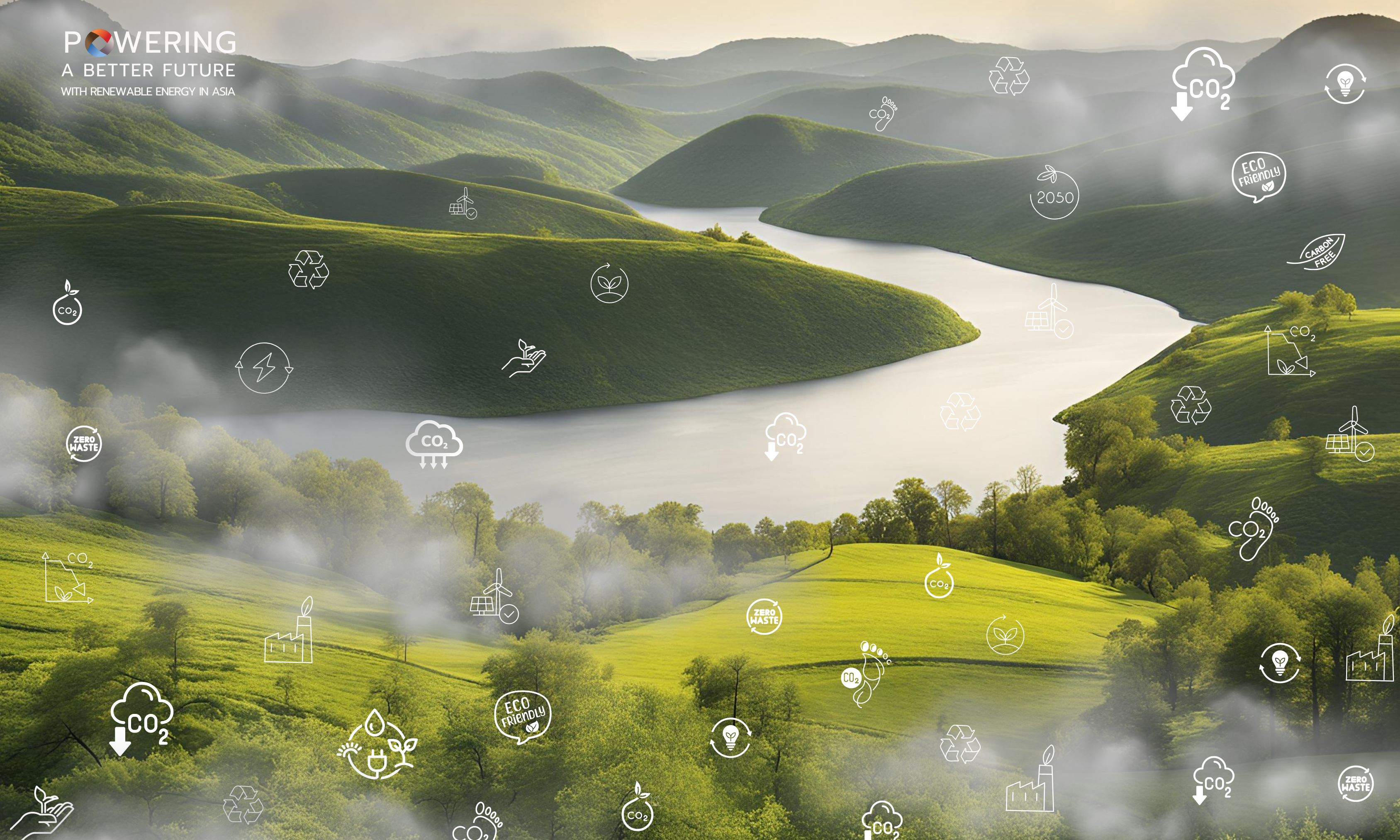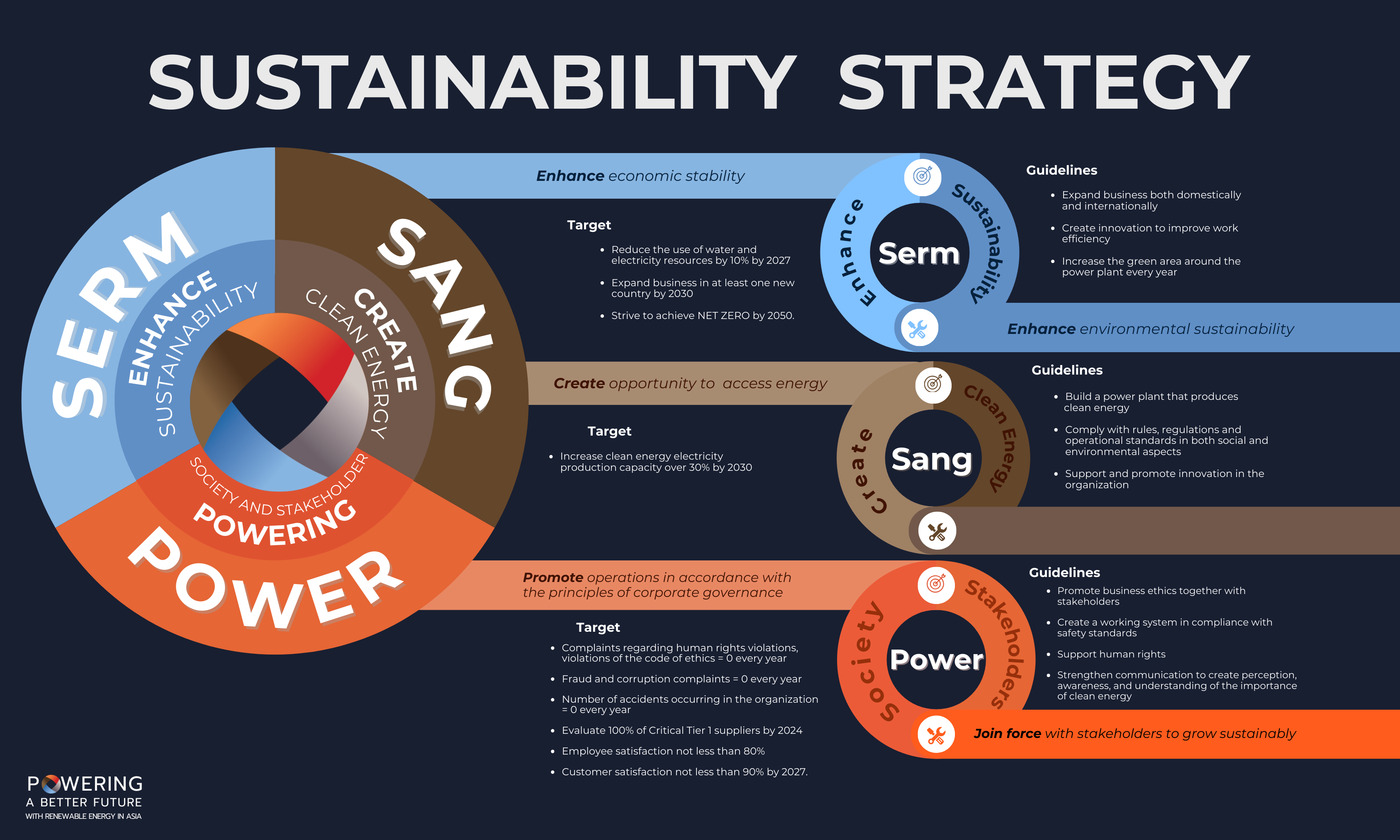Articles
Carbon Footprint: Key indicators to curb the global warming crisis
26 July 2024

Global warming and climate change have become important global agendas for the public, private businesses, and individuals. Every sector has to focus on environmental impact, which drastically changes the world.
In an effort to prevent and suppress environmental impacts as much as possible, setting “an indicator”, which is numerically assessable, is one key tool to help track and suppress potential environmental impacts systematically.
What is Carbon Footprint?
Carbon footprint is an indicator of the amount of greenhouse gases generated by various activities, from everyday life like cooking, traveling, and consuming electricity to businesses and service activities such as product manufacturing, raw materials chosen, production processes, service models, and waste management.
Greenhouse gases in this context refers to seven Global Warming Potential (GWP) gases, including carbon dioxide, methane, nitrous oxide, hydrofluorocarbon, perfluorocarbon, sulfur hexafluoride, and nitrogen trifluoride.
These gases have different global warming potentials.
Carbon Footprint Calculation Principles
To calculate the carbon footprint, the emissions of various greenhouse gases are compared to carbon dioxide based on their GWP, converting amounts of other gases to a carbon dioxide equivalent amount unit, or CO2e.
Carbon dioxide equivalent (CO2e) is a comparison of GWP using carbon dioxide as a measurement standard.
For example, 1 kg of CO2 emissions is equivalent to 1 kg CO2e of carbon footprint.
As mentioned earlier, there are many types of greenhouse gases. When other greenhouse gases are emitted, they have a rate of global warming potential compared to carbon dioxide.
For example, for methane gas, which is defined as having a GWP 28 times higher than carbon dioxide, 1 kg of methane gas emission is equivalent to generating 28 kgCO2e of carbon footprint.
In everyday life, we all generate a carbon footprint that varies from activities such as cooking, travel, and electricity consumption.
In Thailand, Thai people have an average carbon footprint of approximately 5.3-5.5 tonnes CO2e/person/year.
In addition to what we do daily, the use of goods and services also contributes to individual differences in carbon footprints.
Because products and services all generate different greenhouse gases, choosing products and services from environmentally conscious businesses and organizations is another way we can help reduce carbon footprint for ourselves and the planet.
Types of Carbon Footprints
In addition to the carbon footprint generated by personal activities, there are also carbon footprints with environmental impact generated by various business sectors and products. There are two main categories:
Corporate Carbon Footprint
Corporate Carbon Footprint (CCF) or Carbon Footprint for Organization (CFO) refers to the amount of greenhouse gasses emitted by an organization’s operations, directly or indirectly, from energy management, supply chain management, waste management, transportation processes, etc.
CCF preparation is one of the processes for displaying data on the amount of greenhouse gasses generated by an organization, leading to the establishment of management guidelines for effective reduction of greenhouse gas emissions.
The Greenhouse Gas Management Organization (Public Organization) has considered the carbon footprint of the organization from three main scopes:
Scope I: Direct Emissions
In Scope 1, carbon footprints are calculated directly based on the activities of the organization, e.g., combustion caused by manufacturing processes, processes and modes of transportation of goods, use of chemicals in wastewater treatment, and other carbon footprints that the organization directly generates.
Scope II: Energy Indirect Emissions
In Scope 2, carbon footprints are calculated from energy consumption in organizations, e.g., electricity, thermal energy, and steam energy, as well as alternative energy that generates fewer carbon footprints, e.g., wind energy and solar energy.
Scope III: Other Indirect Emissions
In Scope 3, other indirect emissions cover other activities that are not non-core activities of organizations, such as employee travel using non-company vehicles, off-site seminar trips, and selection of materials and equipment.
Product Carbon Footprint
Carbon Footprint of Product (CFP) refers to the amount of greenhouse gas generated throughout the product’s life cycle, from the stage of raw material acquisition, production process, distribution, product use, and waste management after the product’s service life ends.
A carbon footprint label on goods or products is one method that shows information about the amount of greenhouse gases emitted throughout the entire product cycle. This will contribute to consumers’ decisions and encourage entrepreneurs to adapt their production technology to be more environmentally friendly.
Nowadays, the use of carbon footprint labels plays a role in global market competition. Many countries are actively adopting the carbon footprint labeling idea, including the UK, France, Switzerland, Canada, Japan, Korea, etc. There is also a demand for products imported from Thailand to affix the carbon footprint label.
Why everyone should be aware of carbon footprints?
Today, our planet is facing increasingly severe climatic changes. The term "global boiling" has been used to refer to continuously rising temperatures, emphasizing the urgent need for measures to prevent the worsening of global warming.
Non-tariff barriers (NTBs) are another method that is being used. Imposing carbon taxes, measures to prevent environmental destruction, and restrictions on greenhouse
gas emissions of businesses and organizations cause business sectors to focus more on carbon footprints.
gas emissions of businesses and organizations cause business sectors to focus more on carbon footprints.
https://thaicarbonlabel.tgo.or.th/index.php?lang=TH&mod=YjNKbllXNXBlbUYwYVc5dVgybHo
https://www.nature.org/en-us/get-involved/how-to-help/carbon-footprint-calculator/
https://www.carbonfootprint.com/warming.html
https://qa.kpru.ac.th/web/downloads/doc/ec8956637a99787bd197eacd77acce5e.pdf





